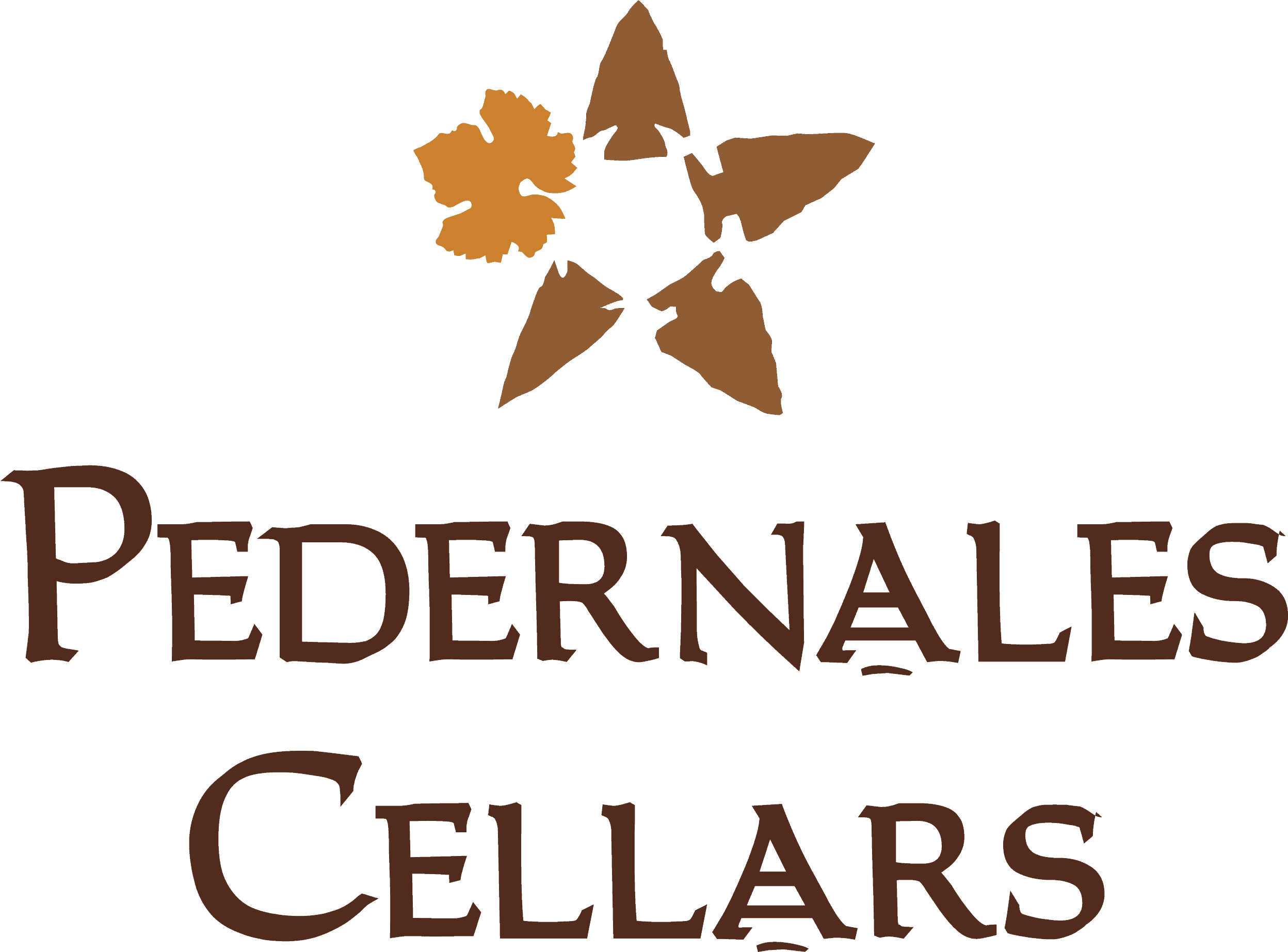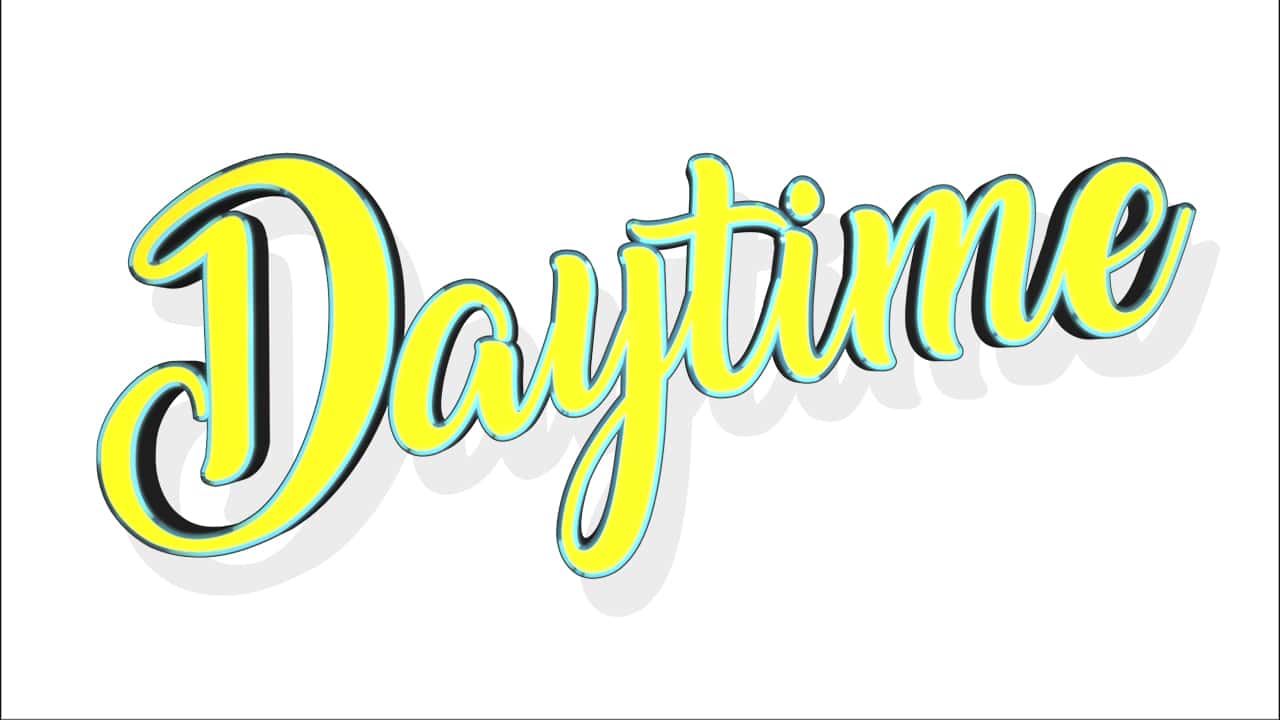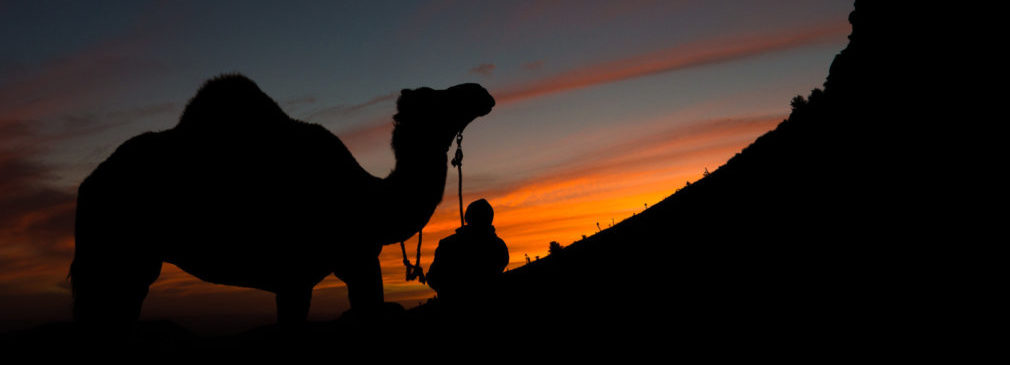
Share
When folks think of Texas, camels may not immediately come to mind. Yet, the one- and two-humped animals do, in fact, have a place in Lone Star lore.
My business, Texas Camel Corps, has been keeping this bit of hidden history alive for over two decades in the form of overnight and multi-day camel treks. On private land in the Big Bend region (of late on Cibolo Creek Ranch) we guide small groups of three to eight guests across the very landscape traversed by the US Army Camel Experiment .
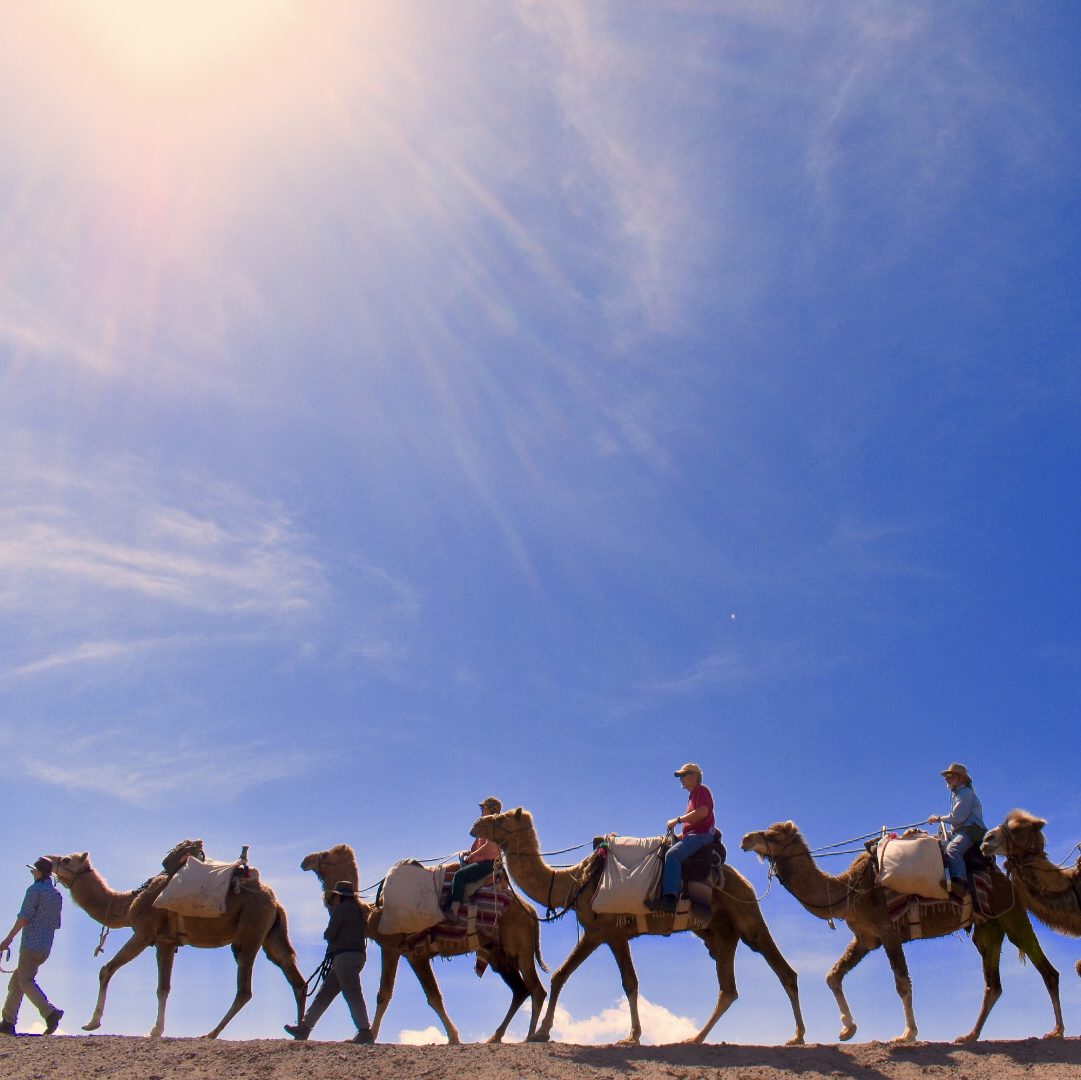
You’ll be forgiven if you’re not familiar with this quirky story from the past, but on the trail you’ll learn of Texas camel tales that include such 19th century notables as Jefferson Davis and Robert E. Lee, both of whom participated in this attempt to introduce camels as pack animals for the U.S. Army prior to the coming of the railroad. These treks also broadly focus on the flora and fauna of the region (thanks to knowledge I’ve gained from growing up in West Texas), dispelling myths about camels being mean and nasty, the role camels play around the world, as well as the various cultures who have called this slice of the Chihuahuan desert home for over 10,000 years.
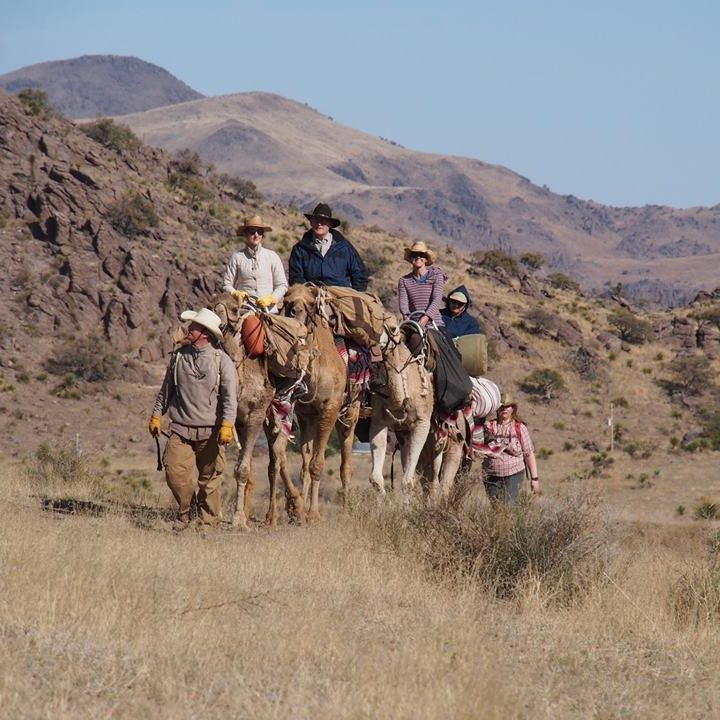
These days, you’ll find four or five camels on the trail, a small, easily manageable string that winds its way along ranch roads, through creek beds, and across the rugged terrain that seems forbidding to many. The camels, though, take it all in stride. Literally. Guests enjoy seeing the landscape from atop their mounts, covering roughly ten miles on day one, with subsequent days making slightly fewer miles. (A formula landed on in 1998 when our earliest guests actually suggested fewer hours in the saddle.)
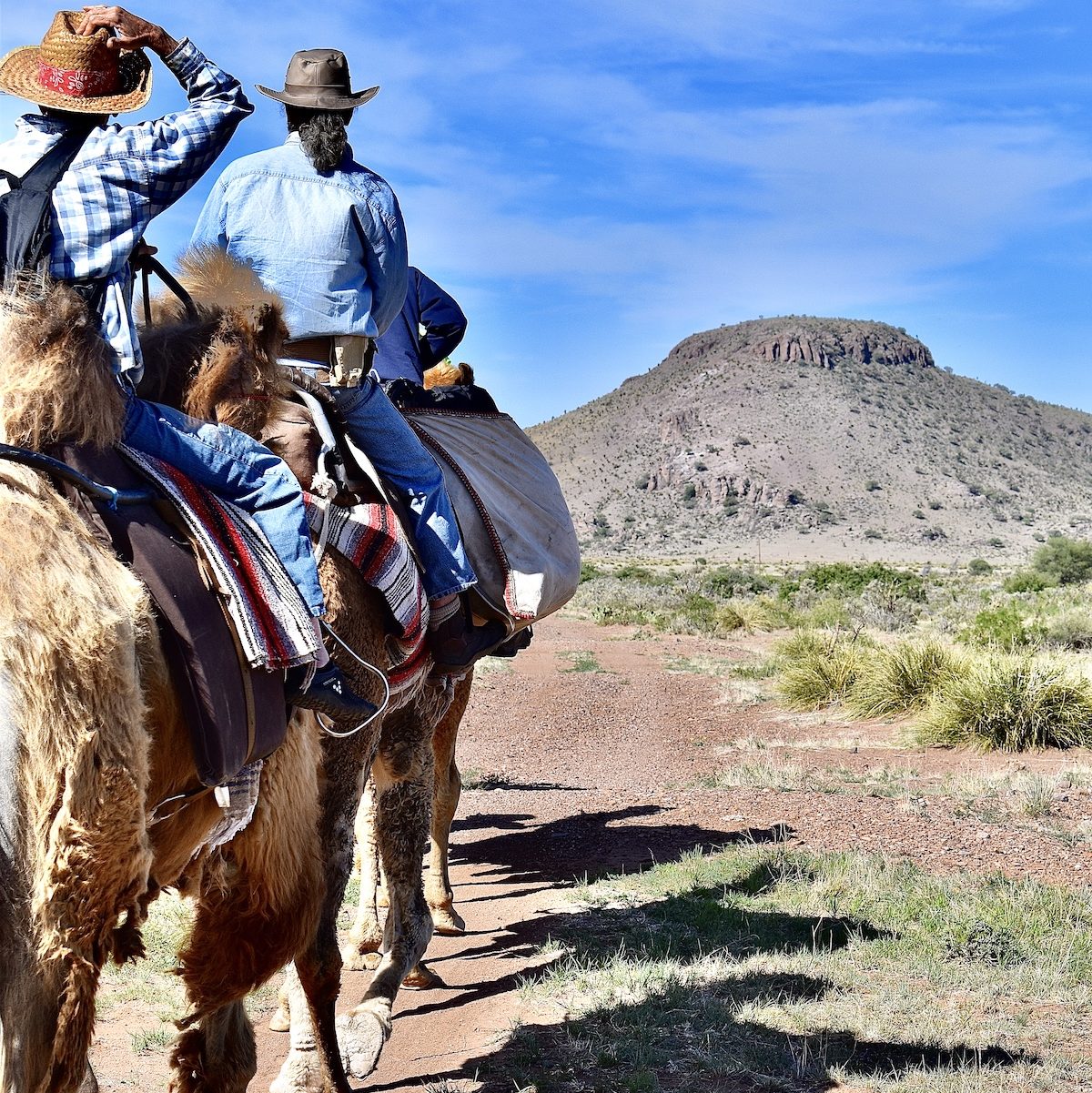
Guests now get their “sea legs” on these ships of the desert in hour-and-a-half to two-hour doses. They can dismount and hike at any time if they choose, as we trek from our gathering point on the ranch to a pre-positioned camp, passing Native American historical sites and points of interest related to the ranching history and unique geology of the region.
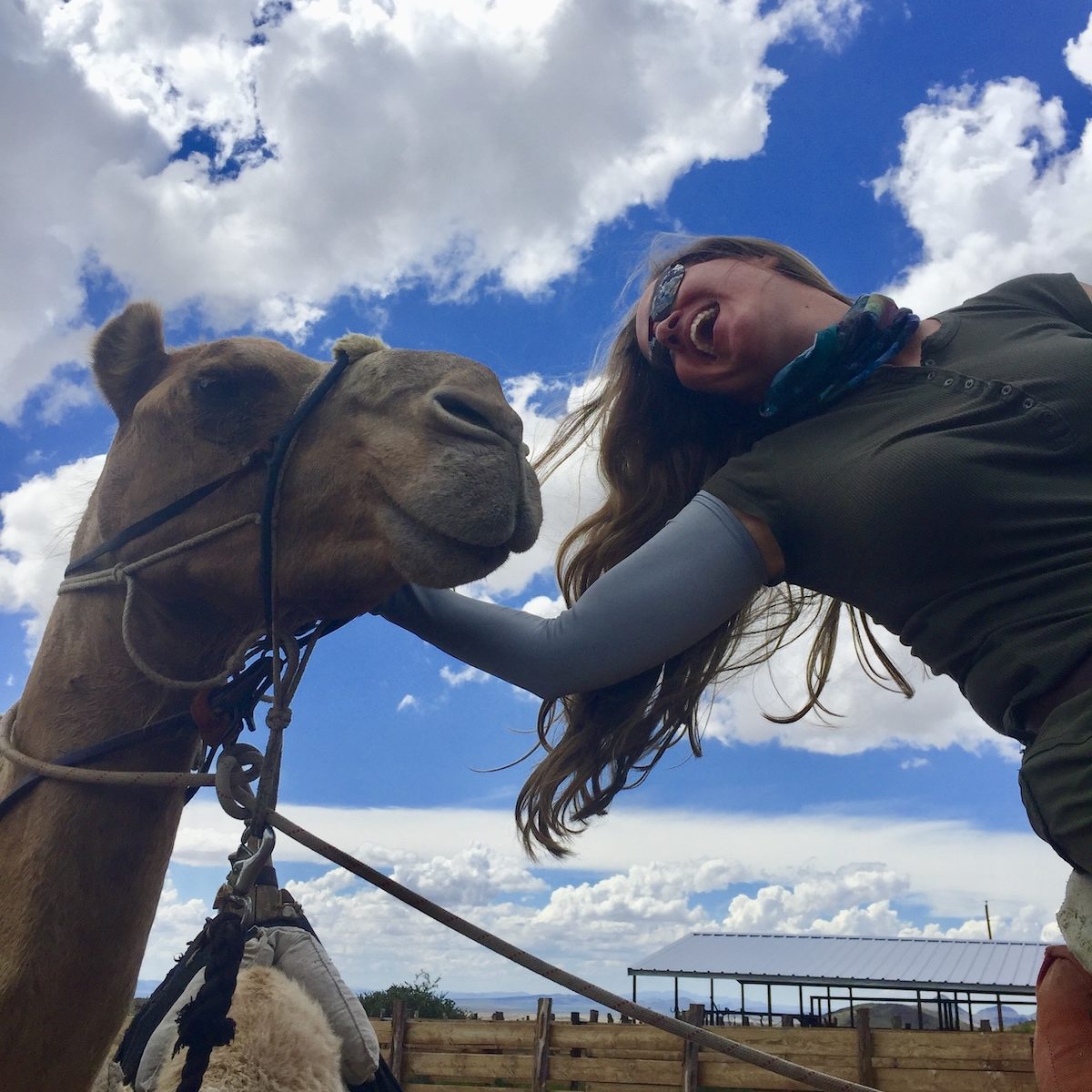
Once in camp, group members are invited to rest in their tents or in the shade of nearby trees, take a hike, or spend time bonding with their camels. “I had no idea camels were so affectionate,” many guests have told me over the years. Other folks marvel at the individual personalities among our caravan. Time spent with our camels, whether riding, brushing before and after saddling and loading gear, or simply in communion in camp is time well spent and consistently ranks among the highlights for our guests.
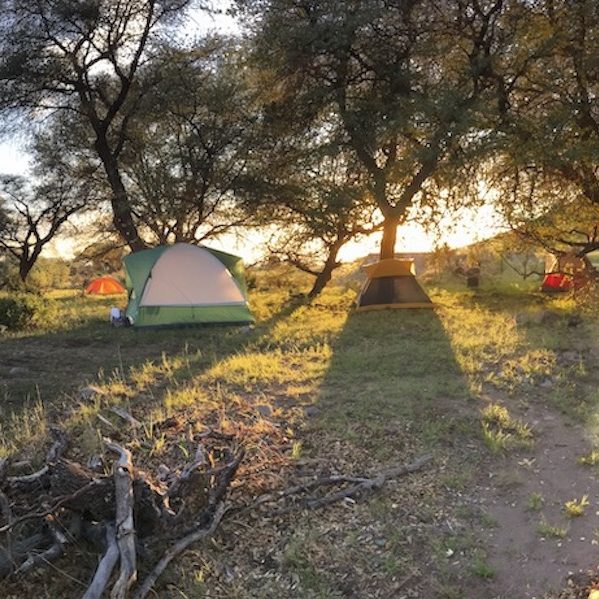
Another thing I learned years ago was to feed folks well. To that end, our dinner offerings include, not surprisingly, Southwestern stylings, as well as Middle Eastern, North African and Indian dishes. While lunch might be a Middle Eastern mezze (pita with a variety of dips like hummus, zaatar, olive oil, tuna and red onion and fuul aka fava beans) complete with dates, all spread out on a Berber carpet or Bedouin rug along the trail, breakfasts take on a decidedly Texan twist…tacos!
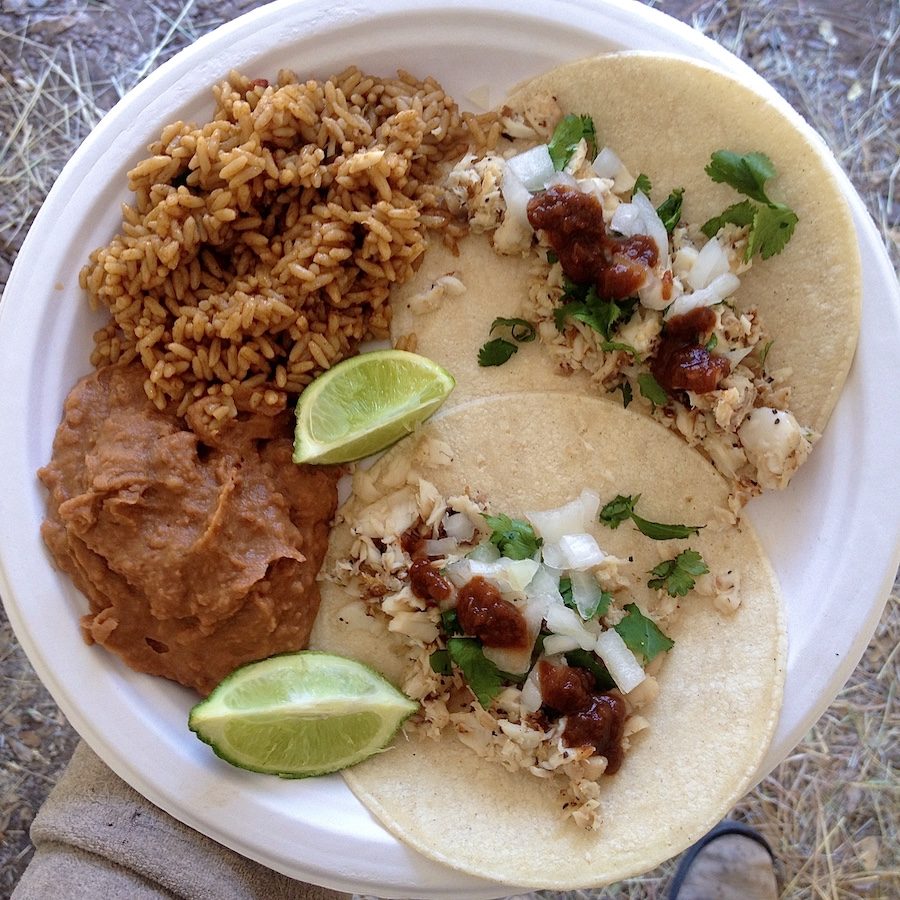
All dietary needs are easily met and over the years we’ve happily accommodated vegetarian, vegan, gluten-free, kosher, and halal requirements. After dinner we enjoy time around the campfire, star gazing, telling stories, further getting to know one another, and, of course, checking on the camels, generally found knelt down, ruminating and resting for the next day’s ride.
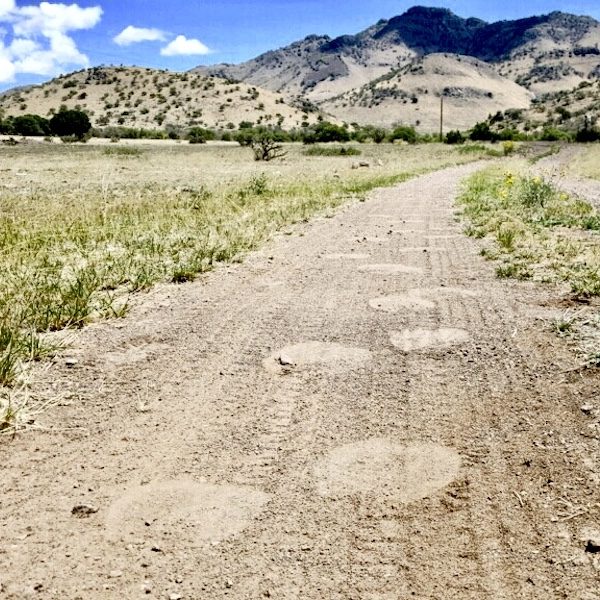
Following breakfast on our return day, guests are encouraged to help brush, saddle and load the camels, then they’re back up in the saddle for the short ride back to our starting point. Because of the distances in West Texas, guests typically stay in Cibolo’s luxurious accommodations the night before and the night after their trek, easily arranged with us at the time of booking. Long after dismounting and going home we hope our guests think fondly of their trek and how camels continue to work to assure their place in Texas history.
What Kind of Traveler Are You? Take Texas Lifestyle Magazine’s Quick Quiz!
Cover photo Bob Grutzmacher
Doug Baum is a tour leader and camel trek guide in Texas, India, Egypt, Jordan, Morocco and Kenya, an award-winning filmmaker, and published historian.








